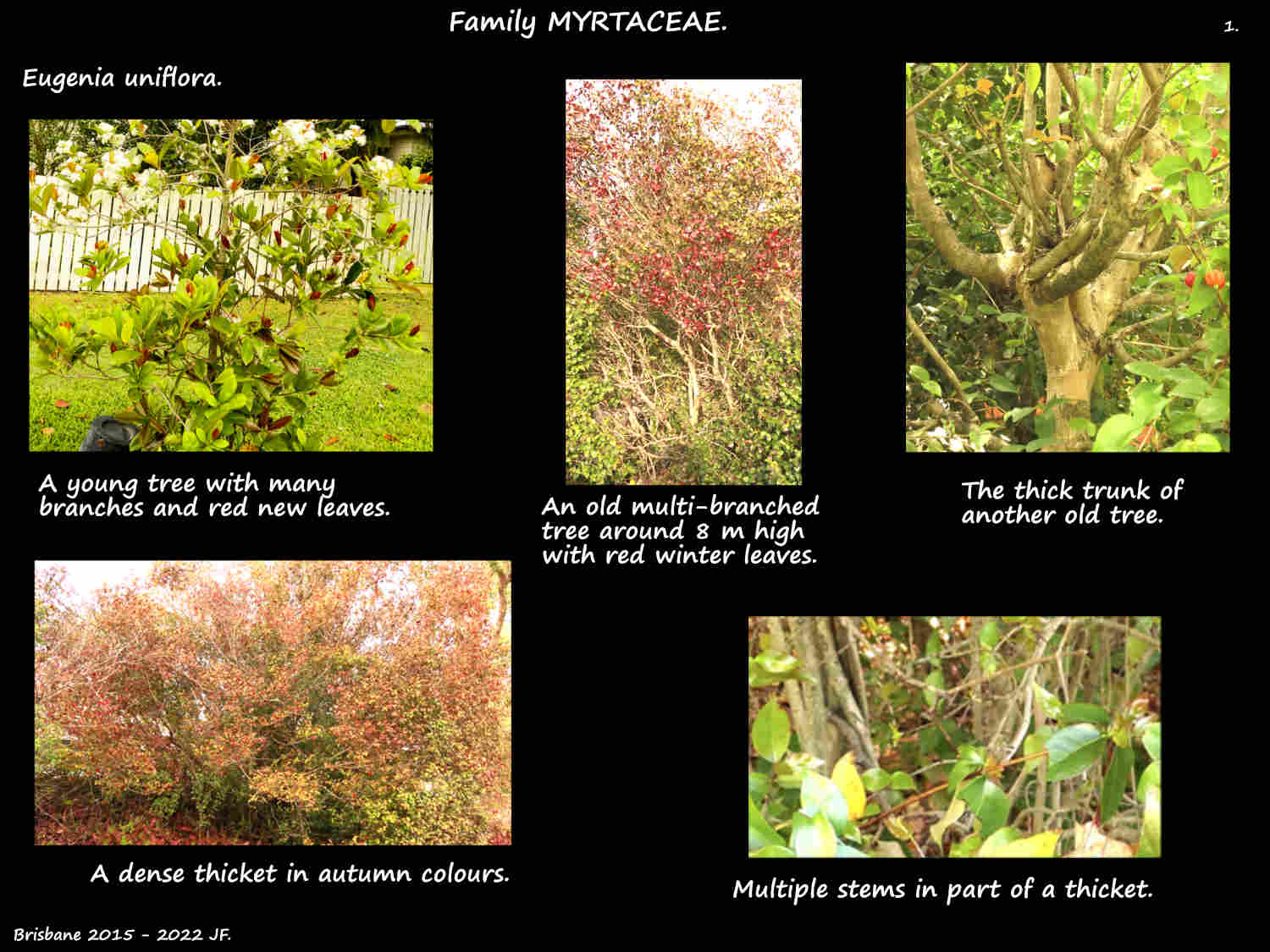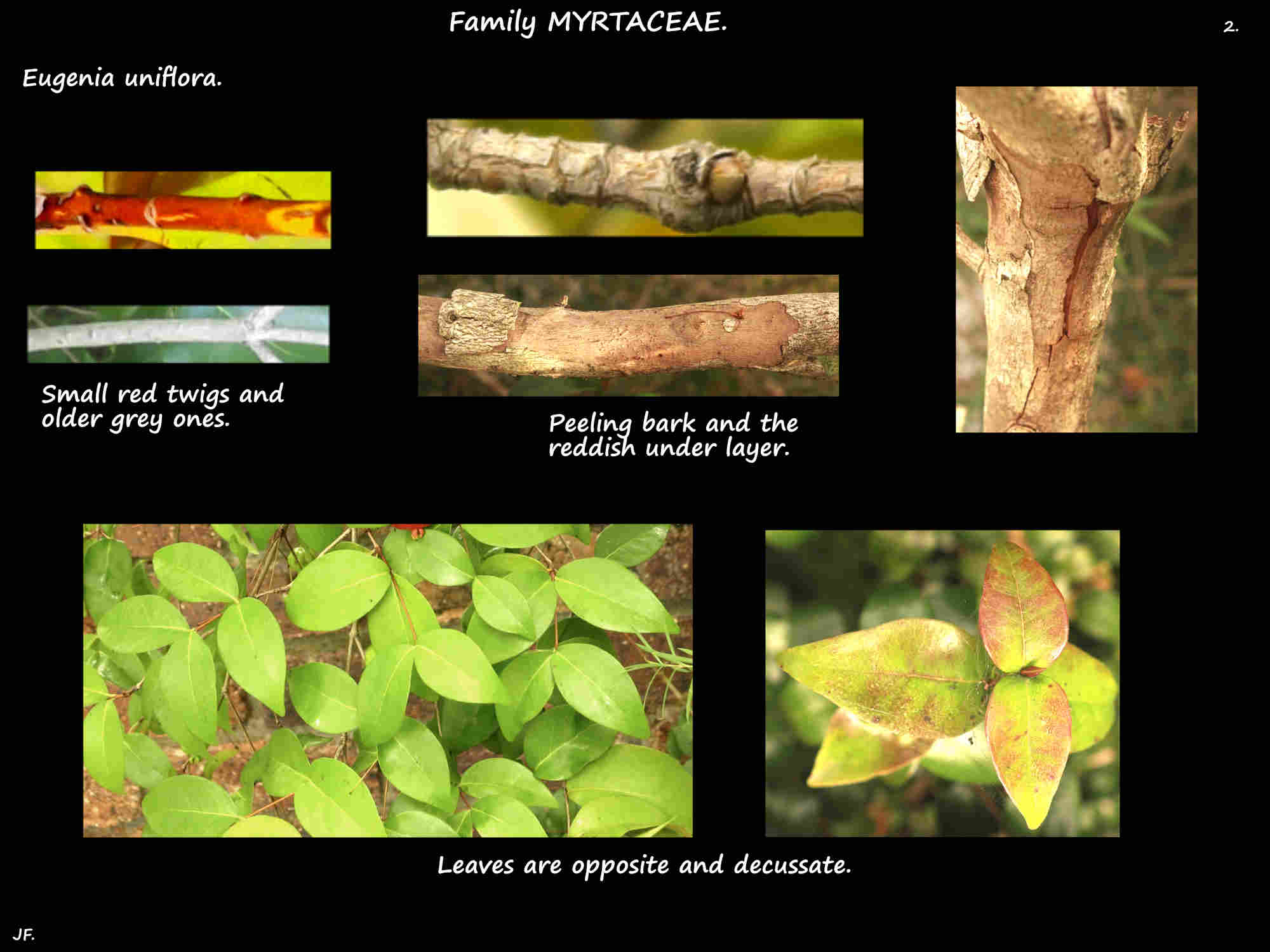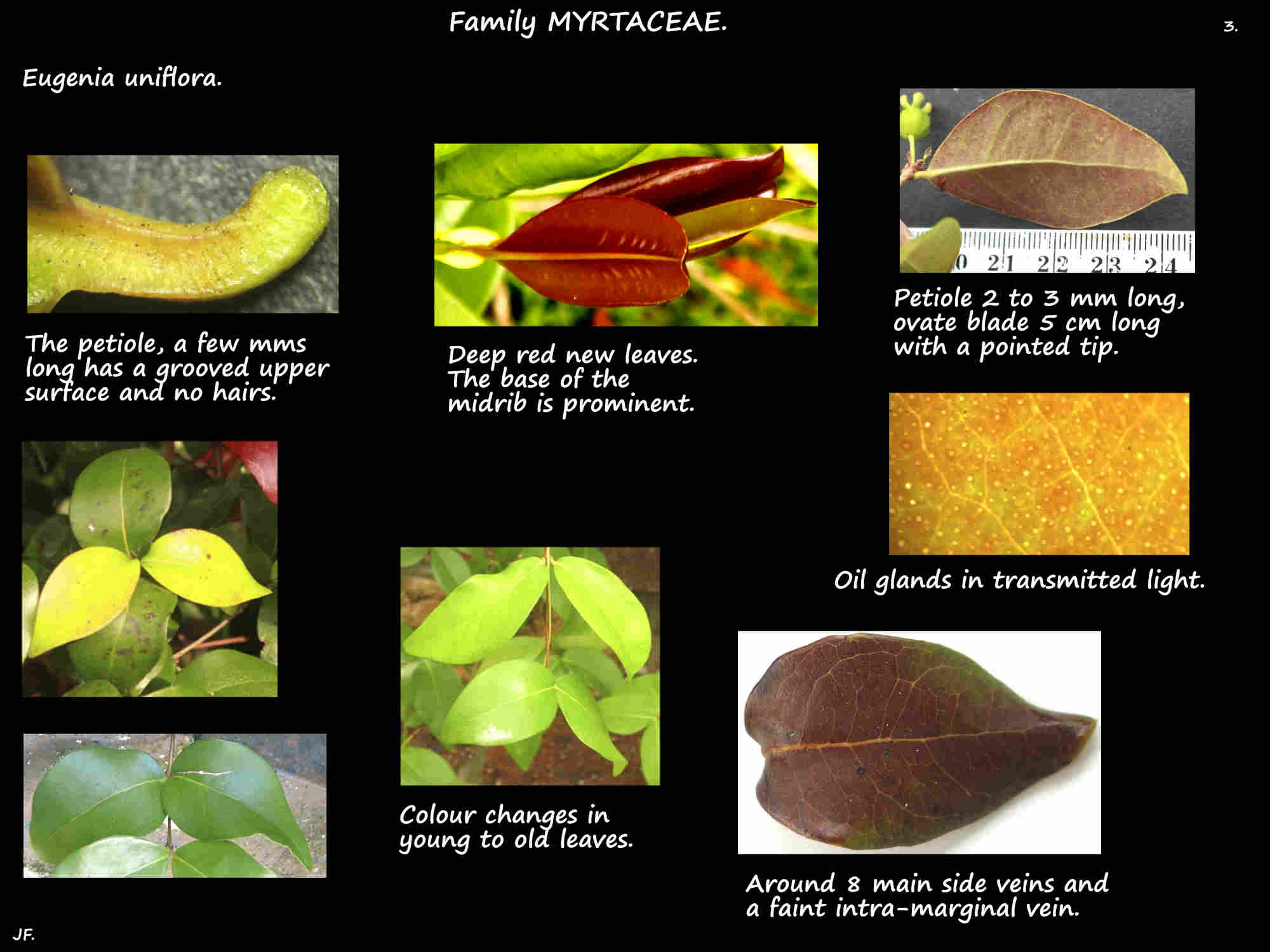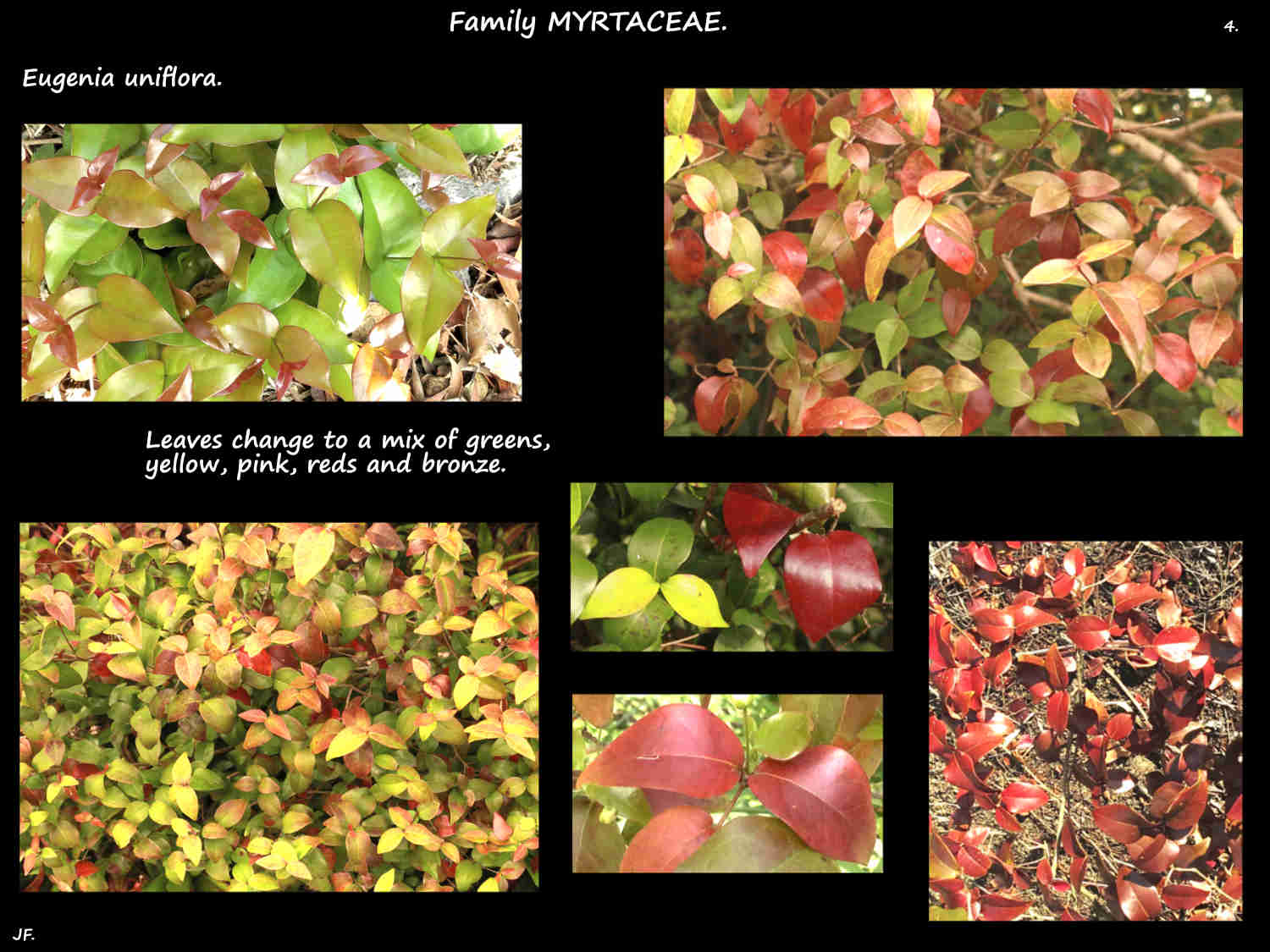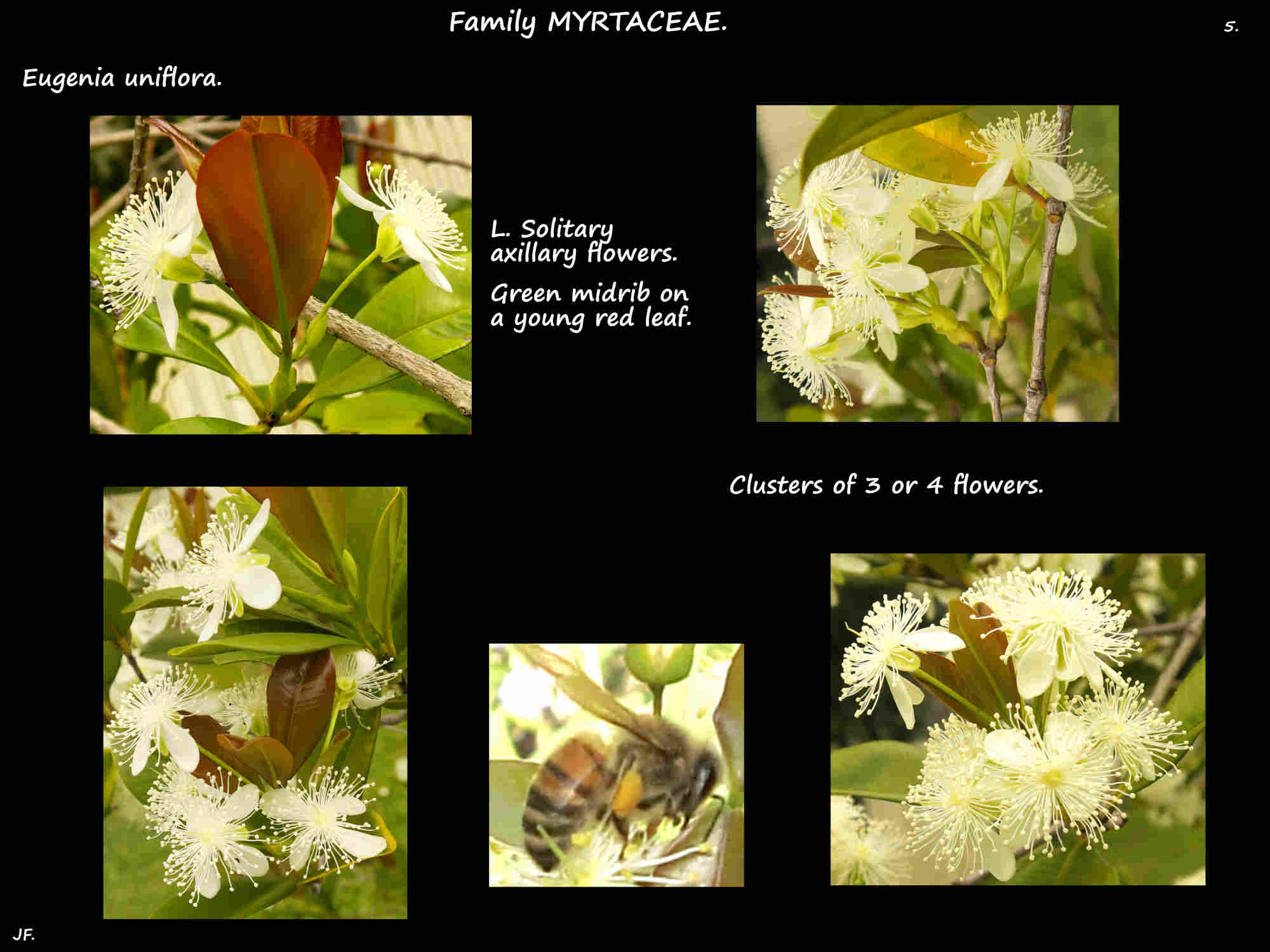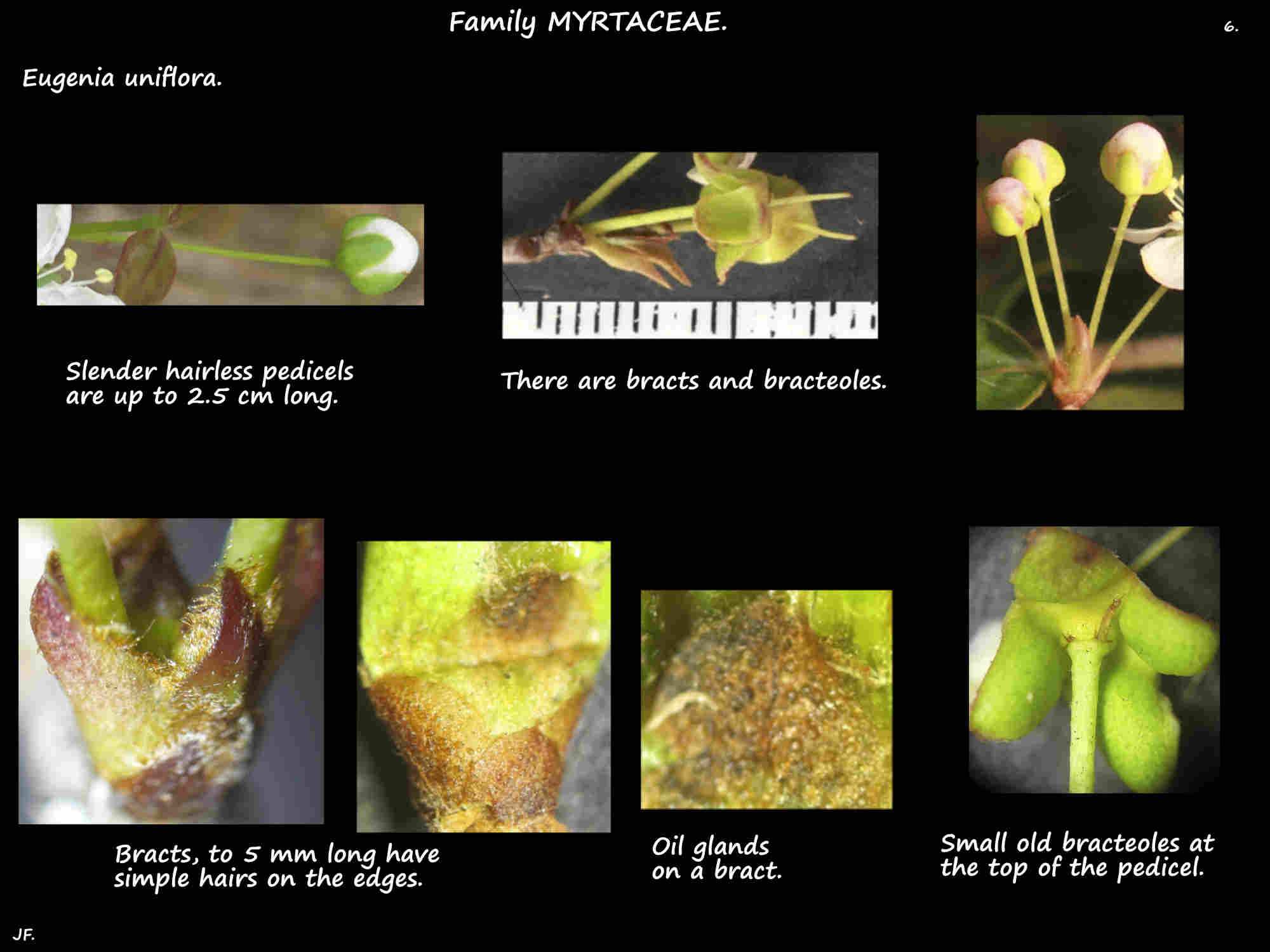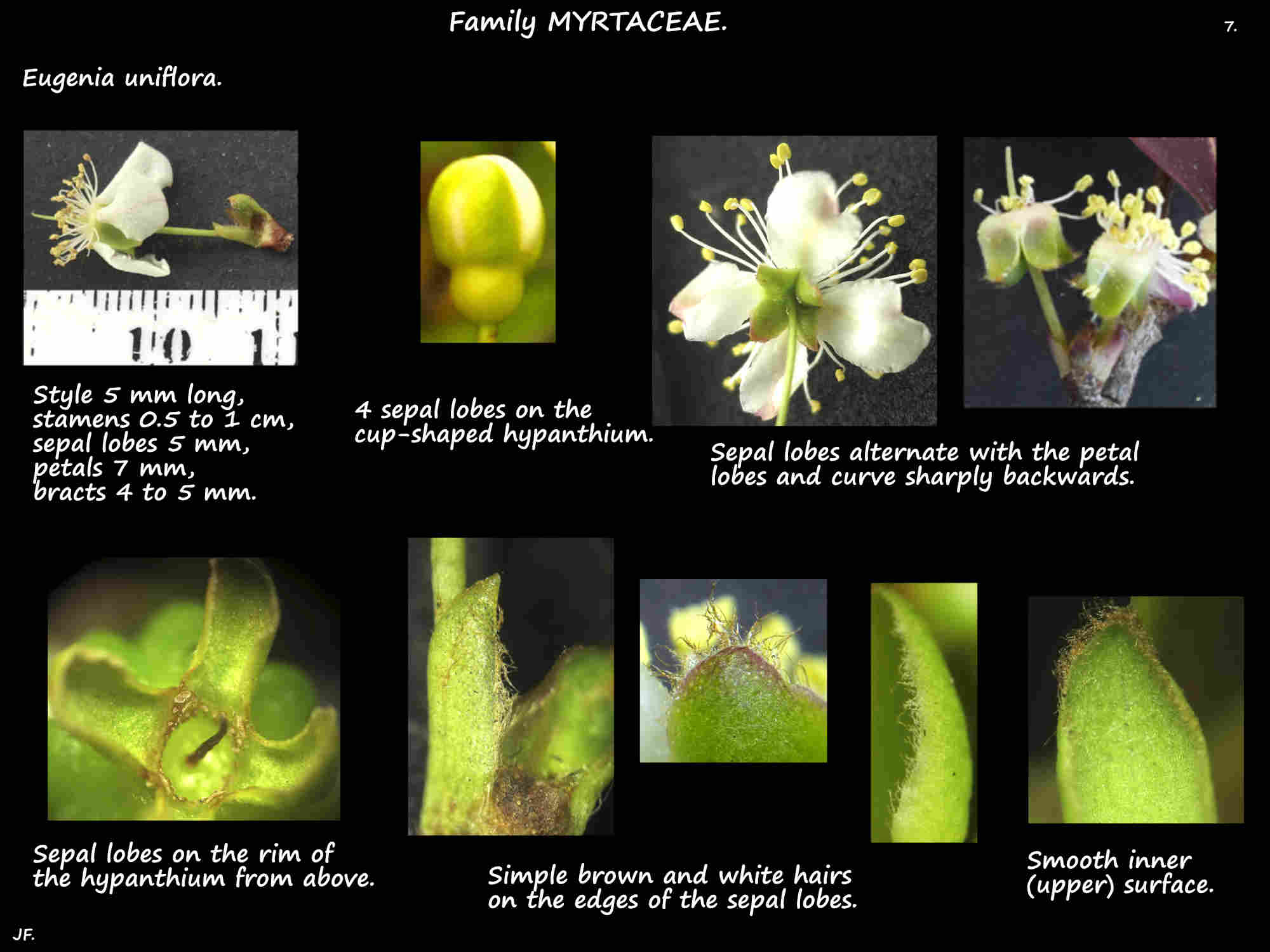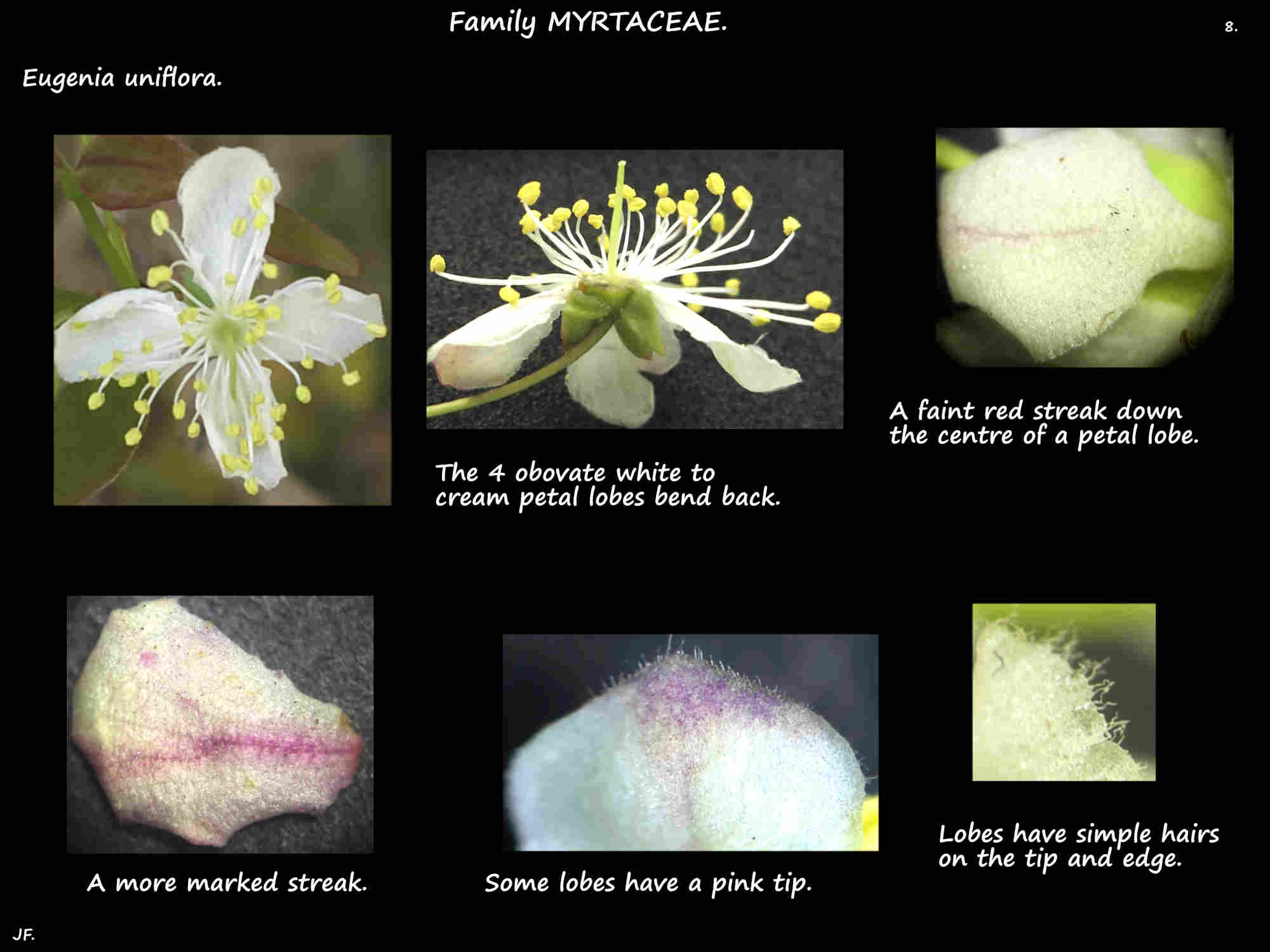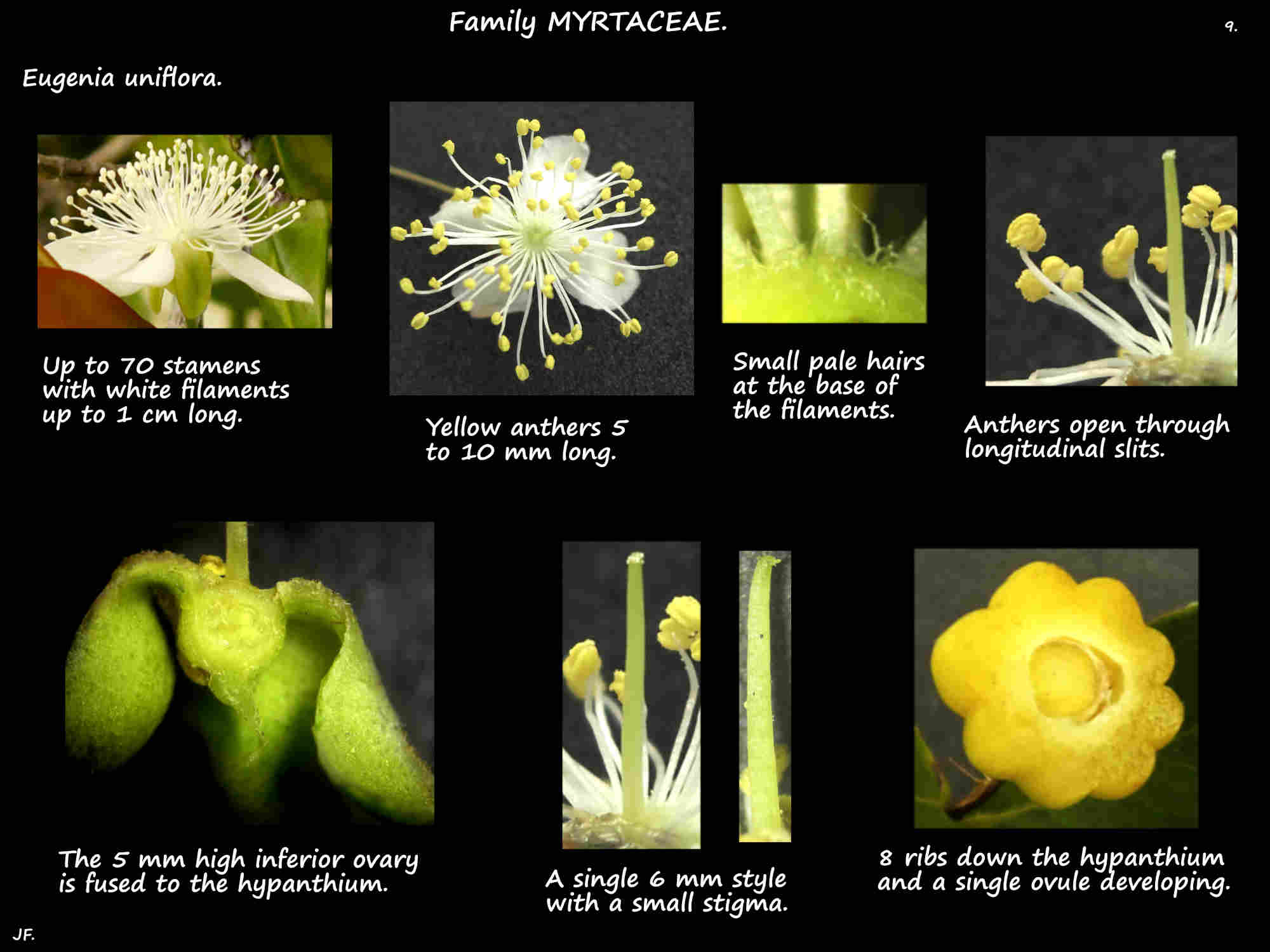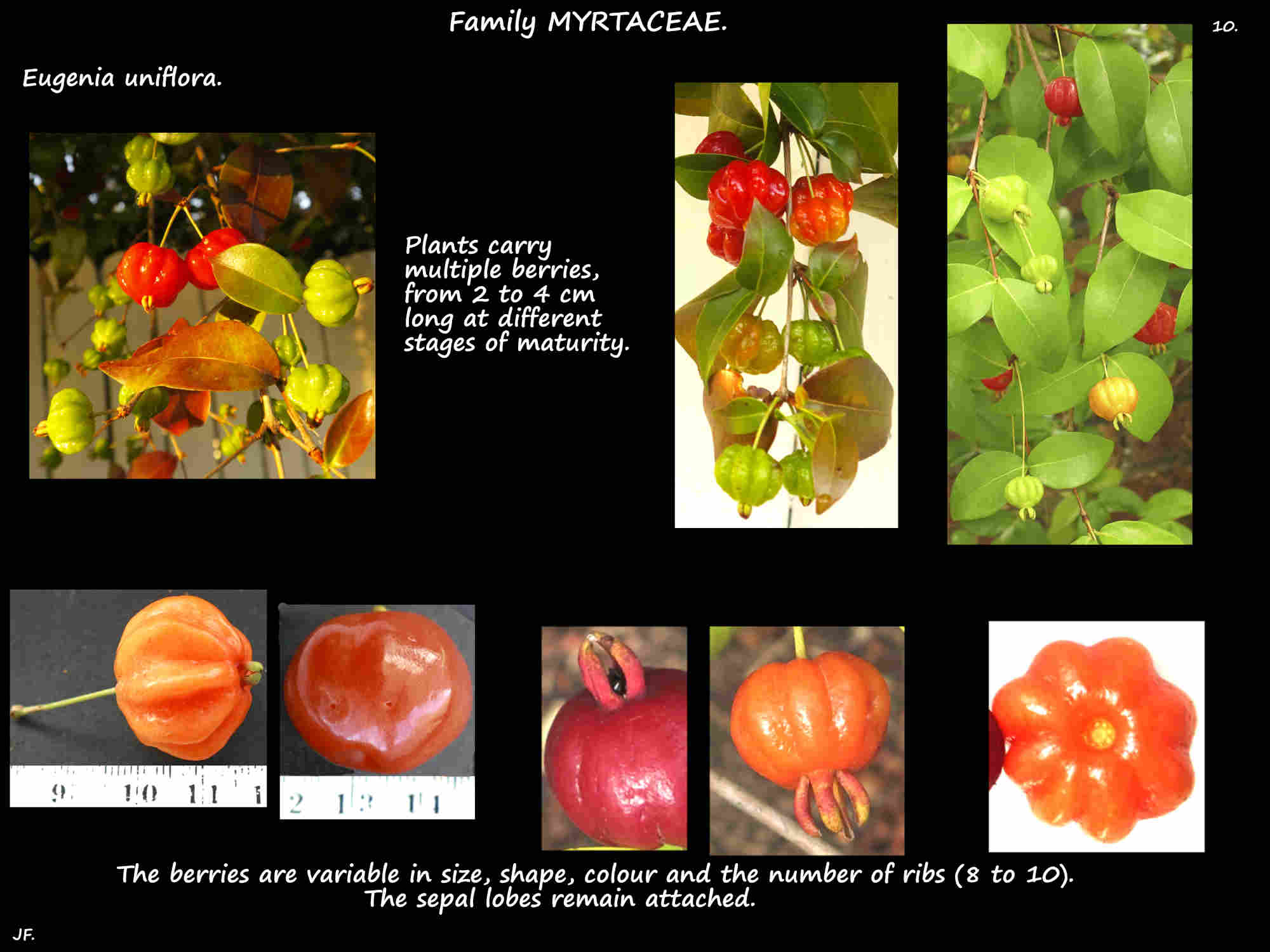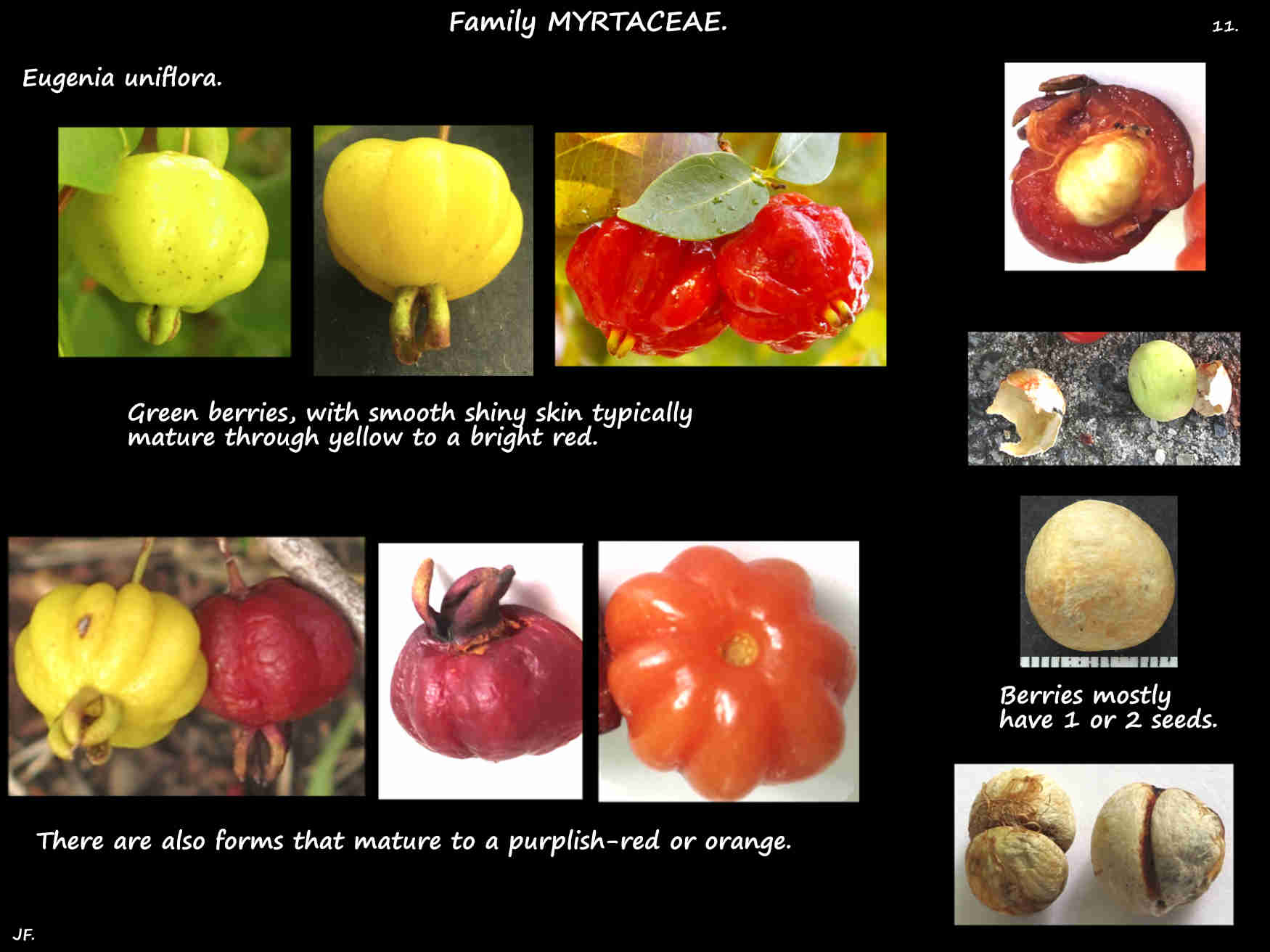Eugenia uniflora.
There are hundreds of species with The Plant list recognising 1058 and Mabberley 750.
Most are from the tropical areas of America and Africa and Australia has only 1 native species.
The Surinam cherry is naturalised in S.E. Queensland.
It is a very common garden plant but has become a weed in many areas.
(It is also known as the Brazilian cherry but this is really the common name for Eugenia brasiliensis.)
They are mostly seen as evergreen multi-branched shrubs around 2 to 3 m high.
They can form dense thickets.
Slender trees with many trunks can be up to 10 or 12 m high.
There are usually no hairs but young round twigs may have some reddish ones.
The pale grey bark on the trunk and larger stems peels off in strips.
The simple oppositely arranged leaves are on petioles around 2 mm long.
The thin blades are 4 (3 or 6 to 8) cm long and around 2 to 3 cm wide.
They are mostly ovate to elliptic with a rounded or pointed tip that may have a mucro.
The base is typically rounded or heart-shaped.
The smooth edge may be wavy and the surface is shiny.
The midrib is sunken on the upper surface and there are 5 to 9 side veins on each side.
There is an ill defined marginal vein 2 to 5 mm from the leaf edge.
New leaves are a red while mature leaves are a green with a paler lower surface.
In cold weather older leaves become yellow then pink, red and copper or bronze.
There are no hairs but there are numerous translucent oil glands.
Axillary inflorescences can be a solitary flower or a small cluster of 2 or 3 (4 to 6).
Flowers are on thin hairless pedicels up to 2.5 cm long.
The small bracts, around 5 mm long by 1.5 mm wide have hairs on the edges.
Bracteoles are about 1 mm long and also have marginal hairs.
There are oil glands on the bracts and bracteoles.
The cup-shaped hypanthium has 8 ribs and no hairs.
The 4 oblong, elliptic or triangular sepal lobes on the rim are around 4 mm long.
They have hairs on the edges and curve back sharply.
The corolla, with 4 white to cream petal lobes is around 2 to 3 cm across.
The round to obovate lobes are around 8 to 10 mm long and 3 or 4 mm wide.
They have a few oil glands and marginal hairs.
The 60 to 70 stamens have white filaments 5 to 10 mm long with small yellow anthers.
The smooth disc is 2.5 mm wide.
The inferior ovary, around 5 mm long has a single style 5 to 6 mm long.
The ovary is fused to the ribbed hypanthium.
There are 2 locules each with around 12 ovules but not all develop.
The fruit are fleshy pendulous berries that are variable in size, shape and colour.
They are typically a slightly flattened sphere 2 (3 to 4) cm long.
There are 8 (to 10) ribs down the sides and the sepal lobes remain attached.
The thin skin the smooth and shiny.
Immature fruit are green ripening mostly to a bright red.
Forms with orange or purple skin occur but are uncommon.
Usually there is only 1 seed but sometimes there are 2 or 3.
J.F.

